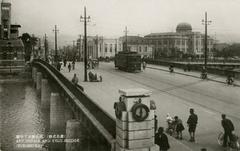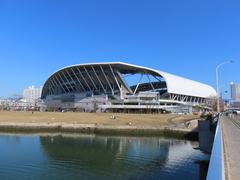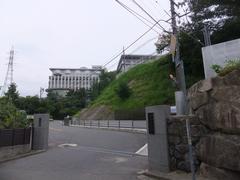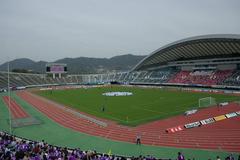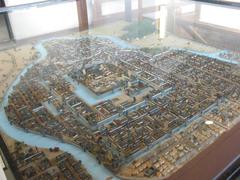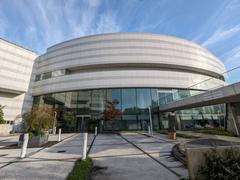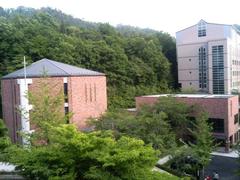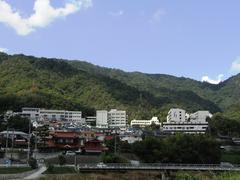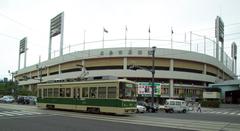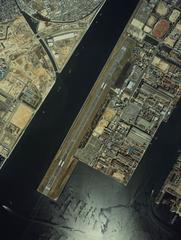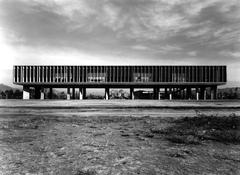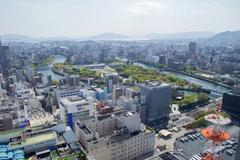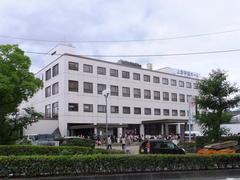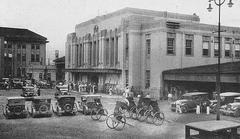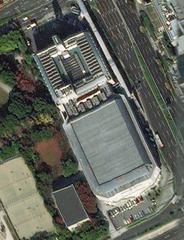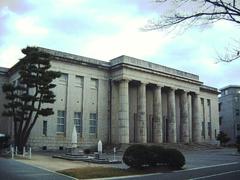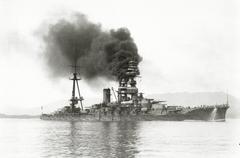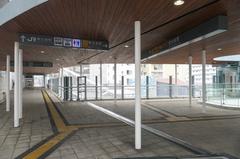Hiroshima Prefectural Art Museum: Visiting Hours, Tickets, and Guide to Hiroshima Historical Sites
Date: 14/06/2025
Introduction
The Hiroshima Prefectural Art Museum is a leading cultural institution in Hiroshima, Japan, and a symbol of the city’s post-war revival and enduring commitment to peace. Established in 1968 and reconstructed in 1996, the museum sits beside the historic Shukkeien Garden, blending modernist architecture with tranquil natural scenery. This guide provides all the essential details for planning your visit, including opening hours, ticket prices, accessibility, collection highlights, special exhibitions, and tips for exploring nearby Hiroshima historical sites. Whether you are an art enthusiast or a first-time visitor, this comprehensive overview ensures a rewarding experience at one of Hiroshima’s most cherished landmarks.
(Dive Hiroshima, Klook, Japan Cultural Expo, Japan Experience)
Museum Overview
Founding and Historical Significance
Opened in 1968 during Hiroshima’s period of post-war reconstruction, the Hiroshima Prefectural Art Museum (広島県立美術館) was conceived as a beacon of cultural renewal and peace. Renovated and expanded in 1996, the museum’s evolution mirrors Hiroshima’s transformation into a vibrant cultural hub. Its collections, architecture, and programming reflect a dedication to both local heritage and international dialogue.
Architectural Features
The museum’s 1996 reconstruction introduced a modernist design that harmonizes with the adjacent Shukkeien Garden. Expansive windows frame views of the garden, integrating the natural landscape into the museum experience. Inside, minimalist interiors with subtle Japanese motifs create a contemplative atmosphere. Facilities include an art library, lecture hall, community gallery, restaurant, tea room, lounge, and a museum shop.
Relationship with Shukkeien Garden
A standout feature is the museum’s close integration with Shukkeien Garden, an Edo-period landscape garden dating to the 17th century. Visitors can enjoy garden views from the museum’s galleries and cafe, and direct access connects the two sites for a seamless cultural and natural experience.
Visiting Hours, Tickets, and Accessibility
-
Opening Hours:
- Tuesday–Thursday, Saturday, Sunday: 9:00 am – 5:00 pm (last admission 4:30 pm)
- Friday: 9:00 am – 8:00 pm
- Closed Mondays (or the following day if Monday is a public holiday) and during New Year holidays
- Always check the museum calendar for updates.
-
Ticket Prices:
- Adults: 510 yen (museum only), 610 yen (museum + Shukkeien Garden)
- Under 18s: Free
- Special exhibitions may have separate pricing.
-
Accessibility:
- Wheelchair accessible with elevators, ramps, and accessible restrooms
- Multilingual pamphlets and signage
- Audio guides in several languages
- Lockers and cloakroom available
- Strollers permitted
-
Photography:
- Allowed in public areas; restricted in special exhibitions (check signage on site).
Getting There
- Address: 2-22 Kaminobori-cho, Naka-ku, Hiroshima-shi, Hiroshima-ken 730-0014
- From Hiroshima Station:
- 10-minute walk
- Hiroshima Electric Railway (Hiroden) streetcar to Shukkeien-mae stop
- City buses and sightseeing loop bus also stop nearby
(Japan Travel, The True Japan)
Collection Highlights
The museum holds over 5,000 works, focusing on:
-
Hiroshima-Related Art:
Featuring local artists such as Ikuo Hirayama, Aimitsu, Katsuzō Entsuba, and Genso Okuda, and important artifacts like the Imari Porcelain Flower Bowl and the Itsukushima Folding Screen. -
Japanese and Asian Crafts:
Includes Mingei (folk crafts), ceramics, lacquerware, textiles, and metalwork—many designated as Important Cultural Properties. Crafts from China, Korea, and Central Asia are also represented. -
Western and Modern Art:
Notable works include Salvador Dalí’s “Dream of Venus” and Isamu Noguchi’s “Tsuisō (Reminiscences)”, reflecting global artistic connections.
(Peace Tourism, Trip to Japan)
Special Exhibitions and Events
- The permanent collection rotates four times annually, offering new perspectives for repeat visitors.
- About six special exhibitions are held each year, ranging from international shows to contemporary pop culture, anime, and manga.
- The museum actively collaborates with other institutions and features family-friendly programs.
- Seasonal events include Hiroshima Kagura (traditional dance-drama) performances with English interpretation, lectures, and concerts.
Upcoming Highlight:
- “The World of Ukiyo-e Cats” (April 26 – June 22, 2025):
Focuses on playful cat imagery in ukiyo-e woodblock prints, with loans from other museums (Hiroshima Museum of Art).
(Dive Hiroshima Events, Japan Cultural Expo, GetHiroshima)
Facilities and Amenities
-
Art Library:
Open to visitors for research and browsing art-related literature. -
Lecture Hall & Event Spaces:
Hosts talks, workshops, and cultural performances. -
Restaurant & Lounge:
Italian restaurant and lounge offer panoramic views of Shukkeien Garden. -
Museum Shop:
Sells exhibition catalogs, art books, and locally inspired souvenirs.
Nearby Hiroshima Historical Sites
-
Shukkeien Garden:
Adjacent; combined ticket available for both sites. -
Hiroshima Castle:
0.39 miles away; a major historical landmark. -
Hiroshima Peace Memorial Park & Atomic Bomb Dome:
Within walking distance; UNESCO World Heritage Sites. -
Hiroshima Museum of Art:
Western and Japanese modern art, 0.47 miles away.
Travel Tips
- Plan Ahead:
Check the official website for exhibition schedules and ticket availability. - Combine Visits:
Combined admission with Shukkeien Garden offers the best value. - Language Support:
English pamphlets and volunteer guides are available; consider joining guided tours. - Peak Seasons:
Spring (cherry blossoms) and autumn (foliage) provide especially scenic visits. - Dining:
The restaurant is popular—consider reserving ahead or visiting during off-peak hours.
Frequently Asked Questions (FAQ)
Q: What are the Hiroshima Prefectural Art Museum’s opening hours?
A: Tuesday–Thursday, Saturday, Sunday 9:00 am – 5:00 pm; Friday 9:00 am – 8:00 pm; closed Mondays (unless Monday is a public holiday), and during New Year holidays.
Q: How much are tickets?
A: Adults: 510 yen (museum only), 610 yen (museum + Shukkeien Garden). Free for under 18s. Special exhibitions may have different pricing.
Q: Is the museum wheelchair accessible?
A: Yes, the museum is fully accessible.
Q: Can I buy tickets online?
A: Tickets are available at the entrance; some special exhibitions offer advance online sales.
Q: Are guided tours or audio guides available?
A: Audio guides in multiple languages are provided; volunteer guides offer tours.
Q: Can I visit Shukkeien Garden and the museum on the same day?
A: Yes, and combined tickets are available for both.
Q: Is photography allowed?
A: Generally permitted in public areas, but restricted in special exhibitions—check signage.
Contact Information
- Telephone: +81 82-221-6246
- Official Website: www.hpam.jp (Japanese; use browser translation tools for English)
Enhance Your Visit
- Suggested Visit Duration: 2–3 hours for a thorough experience.
- Visuals and Virtual Tours: Explore images and interactive maps on the official website for planning.
- Combine Itinerary: Include Hiroshima Castle, Atomic Bomb Dome, and local art galleries for a deeper dive into Hiroshima’s cultural landscape.
Conclusion
The Hiroshima Prefectural Art Museum is a testament to the city’s resilience, creative spirit, and dedication to peace. With its exceptional collections, engaging exhibitions, and integration with the historic Shukkeien Garden, it offers an inspiring journey through art and history. Plan your trip by consulting the museum’s official website for current exhibitions and ticket information, download the Audiala app for audio guides and travel tips, and make the most of your visit to Hiroshima’s cultural heart.
